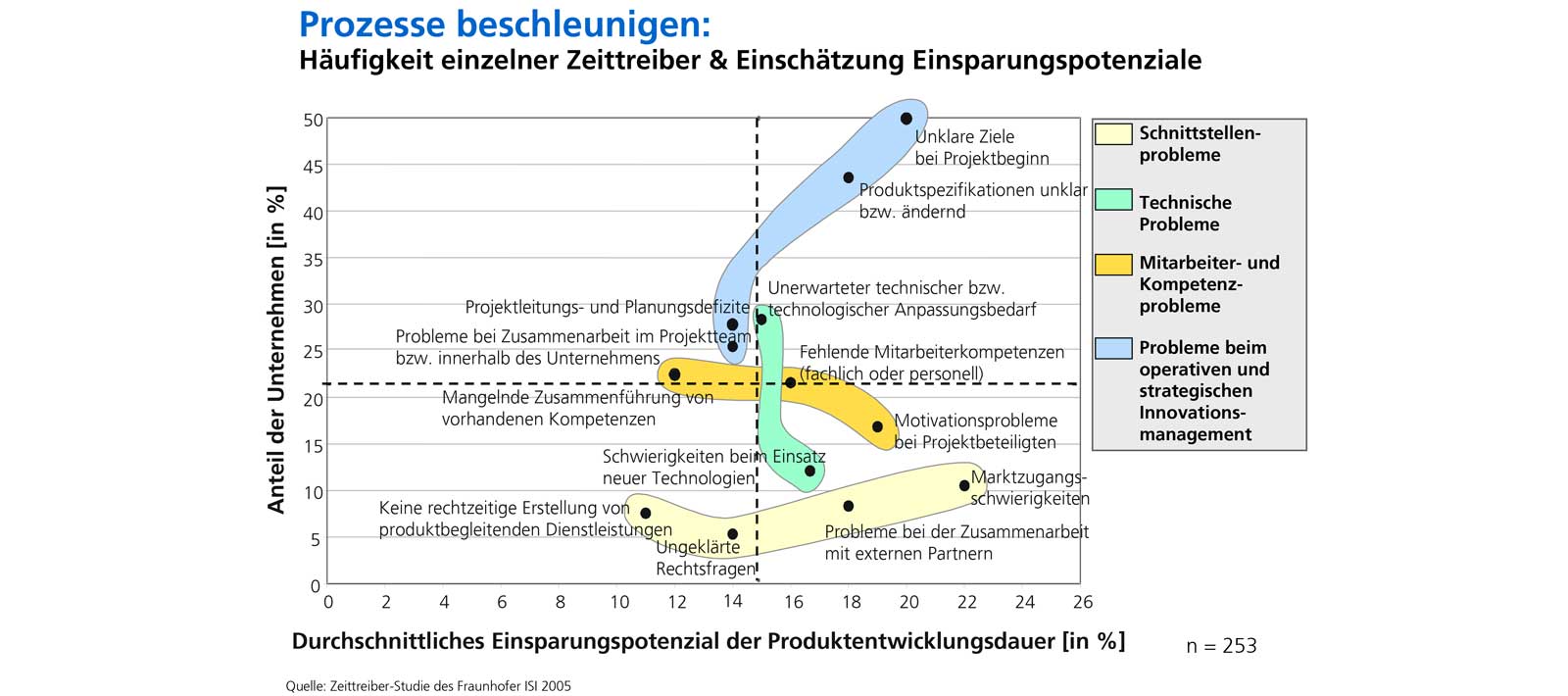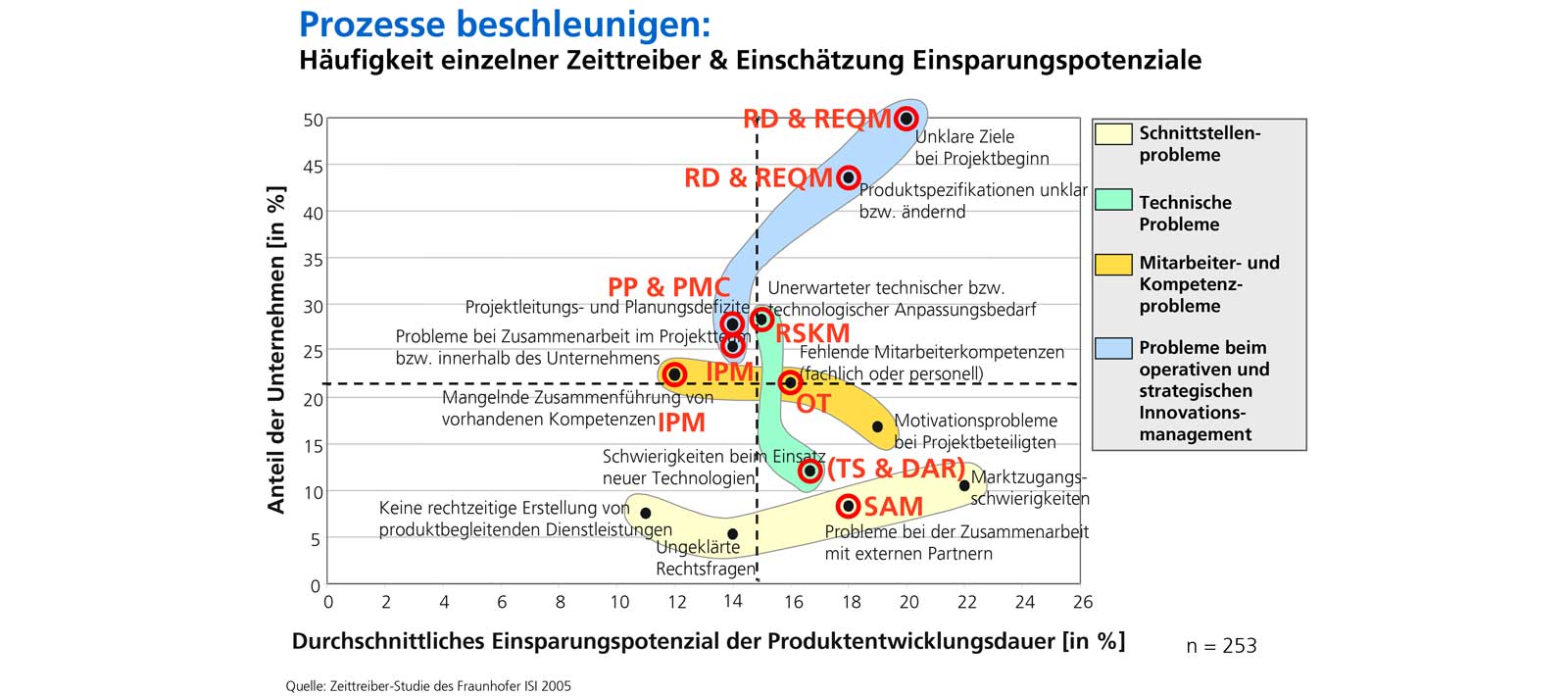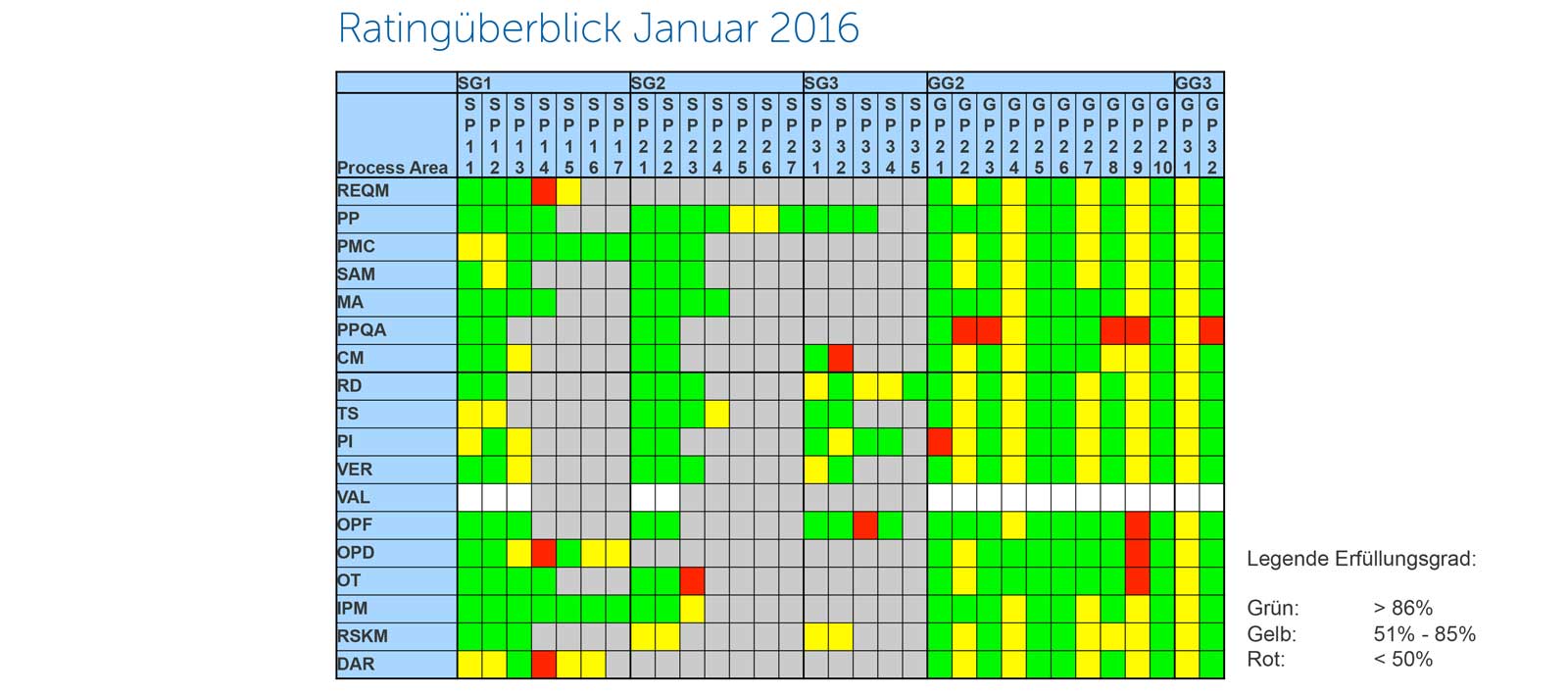Where is time lost?
The study of the Fraunhofer ISI from the year 2005 is somewhat outdated, but in its main features it should still be valid. It shows which problems occur in the companies surveyed, how often they occur and an estimate of the time that could be saved by solving them.
When one sums the incidence and the time saving potential of the most frequent (more frequent than 20%) time wasters, then one gets an average development time savings potential of almost half, to be exact 41%.

How to Tap the 40% Potential?
For example by using CMMI. CMMI-DEV (Capability Maturity Model Integration for DEVelopment) is a process model for product development. It states what has to be done for efficient development, not how it should be done. The model consists of several process areas, which unite goals and practices (the What) for a certain subject.
Looking at the identified time wasters through the eyes of CMMI reveals that a few process areas and their practices address almost all, especially the most frequent time wasters.

- Requirements Development (RD) and -management (REQM) address "unclear goals at project start" (Unklare Ziele bei Projektbeginn) and "project specification unclear and changing" (Projektspezifikation unklar bzw. ändernd)
- Project Planning (PP) and Project Monitoring and Control (PMC) address "project management and planning deficits" (Projektleitungs- und Planungsdefizite)
- Risk Management (RSKM) addresses "unexpected need for technical respectively technological adjustments" (Unerwarteter technischer bzw. technologischer Anpassungsbedarf)
- Integrated (advanced) Project Management (IPM) addresses "problems with cooperation in the project team and in the organization" (Probleme bei Zusammenarbeit im Projektteam bzw. innerhalb des Unternehmens) and "deficient combination of existing competencies" (Mangelnde Zusammenführung von vorhandenen Kompetenzen)
- Organizational Training (OT) addresses "missing competencies of the staff (professional and personal)" (Fehlende Mitarbeiterkompetenzen (fachlich oder personell))
- Supplier Agreement Management (SAM) addresses "problems in the cooperation with external partners" (Probleme bei der Zusammenarbeit mit externen Partnern)
- additionally Technical Solution (TS) and Decision Analysis and Resolution (DAR) can help to solve "problems with the adoption of new technologies" (Schwierigkeiten beim Einsatz neuer Technologien)
This means that the successful adoption of those processes according CMMI significantly reduces the time for development.
We have got CMMI...

We are using CMMI since five years as a model for our work and process optimization. In an appraisal (according SCAMPI C by Wibas) in January 2016 we have achieved the results of the summary above (green meaning more than 85% conformance for the according practice, red less than 50% conformance, yellow in between). For the details of the Process Areas and der according SP (Specific Practices) and GP (Generic Practices) see CMMI for Development.
We are very proud of the result, however there are still a few things to do. Though continous improvement is an important dictum of Solcept (and CMMI also).
Andreas Stucki
Do you have questions to CMMI or our implementation? Would you like to get to know the way we work in your project? Do you have additional questions? Do you have a different opinion? If so, email me or comment your thoughts below!
The study: I could not find the original study, the graphics is from the presentation "Was kommt nach der Krise?" by P. Ohlhausen, Fraunhofer IAO 2009-11-15.


No Comments